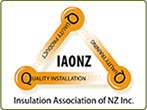 There’s no question that efficient home insulation makes your home healthier and saves you money in heating bills so making the decision to insulate is not difficult. The hard part comes when deciding how to insulate.
There’s no question that efficient home insulation makes your home healthier and saves you money in heating bills so making the decision to insulate is not difficult. The hard part comes when deciding how to insulate.
The first step is to assess the areas of your home that need insulating.
Check the roof cavity first. Is there no insulation? If there is insulation, has it has slumped or degraded over time? If you answered Yes to either question, you need insulation in this area of your house.
If you can access the area under your house, check to see if there is any under-floor insulation. It will be between, or stapled to, the underside of the floor joists.
Once you’ve decided which parts of your home need insulation, the next step is to choose the most effective insulation materials for your requirements.
Comparing House Insulation Materials
The effectiveness of materials for insulation is based on their R-value or thermal performance. The R-value measures the material’s capacity to resist heat flow. A high R-value indicates the insulation is highly effective in slowing down the transfer of heat, thereby retaining the warmth within the home and reducing the amount of energy used for heating. The greater the R-value the better.
The R-value of a material does not depend merely on what it is made of. The type of insulation, for example fibreglass or cellulose or polystyrene, and its thickness are taken into account as well. That is why it is essential to compare like with like when you are looking at insulation.
There are other factors to consider when comparing insulation. Look at long-term effectiveness and durability. The materials should not degrade over time. Is there a guarantee and how long does it last for?
Read about the product’s resistance to vermin. You do not want rats and mice nesting in your insulation. Make sure it is fire-retardant, or slows the flow of fire. Check its resistance to moisture which is important if you want to eliminate mould and dampness in your house.
Finally, consider the green aspect of the insulation. Does it use a minimum of energy to manufacture? Is it made from recycled products? Is it free from harmful chemicals?
House Insulation Installation Choices
Once you know which areas of your house need insulation and which insulation you would like to use, you need to decide who is going to install it. There are two major options available when it comes to installation. One is to do it yourself. The other is to use professional services.
Doing it yourself is a time-consuming and often expensive exercise. Never assume that a DIY project will be cheaper. You will have to invest in the hiring of equipment and buy additional tools and materials for the installation project. Furthermore, there is a safety risk especially if electrical cabling is already in place. The biggest drawback of all is that the insulation may not work as effectively as it should. For all of these reasons, it is best employ professionals to install your insulation.
Contact us now for more information or a free quote.


